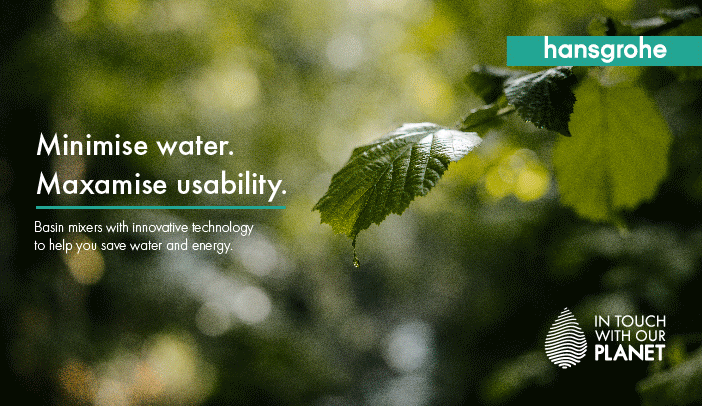- How do we create buildings that use energy efficiently?
- Traditionally, efforts to green the built environment have centered on the physical infrastructure, often overlooking the relationships between people and space.
- The emergence of the technological era has ushered in “Smart Buildings.” that employ machine learning and automation.
- These innovative structures are designed to operate with impressive energy efficiency; however, they are largely disconnected from their occupants.
- What if buildings could be made smarter and more sustainable by engaging with their occupants?
“Buildings could be a lot smarter if we leverage the brains of the people inside of it”, shares Paul Chávez, Associate of User Experience and Technology at ARUP. Spearheading the project BREO (Building Resource Expression and Optimization), Chávez highlights the untapped potential of engaging occupants in actively conserving energy in buildings. Buildings consume a significant portion of the world’s energy and resources, and yet its occupants often remain detached from the consequences of their energy consumption. BREO is a novel approach to tackling this problem, using sensory technology to create a more intuitive and interactive relationship between buildings and their inhabitants.

BREO Light Displays . Image Courtesy of ARUP
Going beyond the concept of smart buildings, the project leverages human intelligence by creating a responsive system that communicates real-time resource usage. The system equips buildings with “express” data from building electrical, thermal comfort, air quality, water, natural gas, lighting, and audiovisual systems through sensory outputs. Bridging the gap between building systems and their occupants, BREO assures that people are not only aware of their environmental impact but are also empowered to make changes. The system leverages human senses to communicate resource benchmarking, ensuring occupants can readily discern whether the building is in a positive, neutral, or negative state about its resource usage. While the project is still in the research phases, it has seen promising prototypes that seek to enhance occupants’ relationships with buildings.
The key idea of the project is the creation of real-time expressions of resource usage using sensory technology such as audio, video, lighting, and even scent. Scrapping traditional quantitative data displays, the sensory interfaces provide occupants with an intuitive way of understanding a building’s performance. For example, video or lighting in a space is used to convey positive, neutral, and negative states through specific colors, emulating biomimetic imagery. Occupants are then able to understand how to respond to the environment and immediately improve the building’s environmental performance. The system provides occupants with a more visceral relationship to their surroundings, similar to how indigenous communities co-exist with the natural environment.
Sensory interfaces go beyond just visual displays – BREO explores the possibility of integrating sound and scent into the building’s communication system. In regards to water usage, a water soundscape may imitate environmental sounds when in a positive state, noise when negative, and silence when neutral. Similarly, air quality issues might be signaled by introducing noticeable scents into the space as an olfactory cue. “An effective implementation would be similar to how the sun’s position conveys time, which we inherently grasp. The system would understandably convey real-time data for its occupants”, Chávez explains. BREO creates ambient and qualitative experiences to humanize otherwise complicated numerical figures.

Cyprus International University Masterplan. Image courtesy of ARUP
In an age where climate action is imperative, the BREO project offers a refreshing perspective on building sustainability. Traditional automation systems can often detach individuals from their role in resource consumption. On the other hand, BREO encourages occupants to take personal responsibility for optimizing resource usage. By using multi-modal sensory technology to connect occupants to their environment, individuals are empowered to make informed choices and take personal responsibility for resource usage. It allows for real-time responses to data, such as adjusting lighting, temperature, or water usage, thereby, optimizing the building’s performance. “People already respond to buildings in this manner”, Chávez states, “When occupants operate blinds based on daylight levels or modify the temperature to suit their comfort, they are reacting to the environment. BREO would function in the same way, allowing occupants to respond to more data”. Providing occupants with the agency to act on information, the sensory system advocates for a collective effort where occupants play an active role in shaping the building’s performance.
The project was born out of inspiration from studying indigenous cultures in California, USA, that thrived in symbiosis with their natural surroundings. These communities co-existed with respect and interaction in their environments rather than asserting superiority. “In light of the climate crisis, people have to engage with their immediate environment which, in the 21st century, equates to the built environment,” Chávez points out, “How can we design structures that foster a relationship as though you’re outdoors?” The project adopts a community-inspired model, promoting shared responsibility among occupants and encouraging collective efforts toward a sustainable future. By establishing a sensory connection with inhabitants, BREO bridges the gap between the built environment and our innate connection with nature.
The sensory technology used in the BREO project represents a significant departure from the current approach to building management. Going beyond efforts of greening buildings, BREO views sustainable development in a more holistic light. The occupants of a building are a key factor in the broader system of building design. The human “hive mind” is pivotal in fostering sustainability and solving wicked problems related to climate change.
BREO bridges the divide between building automation and human interaction, paving the way for smarter and more sustainable structures. By extending a sense of agency towards occupants along with a sense of community and stewardship, building energy use can strategically be optimized. Innovation and research will push the boundaries of how the architecture industry and the built environment at large address the issues of climate change. By harnessing technology and fostering a sense of ecological stewardship, buildings go beyond being passive structures to proactive contributors to a more sustainable future.
Author: Ankitha Gattupalli
This article was first published in ArchDaily and is republished with permission.















